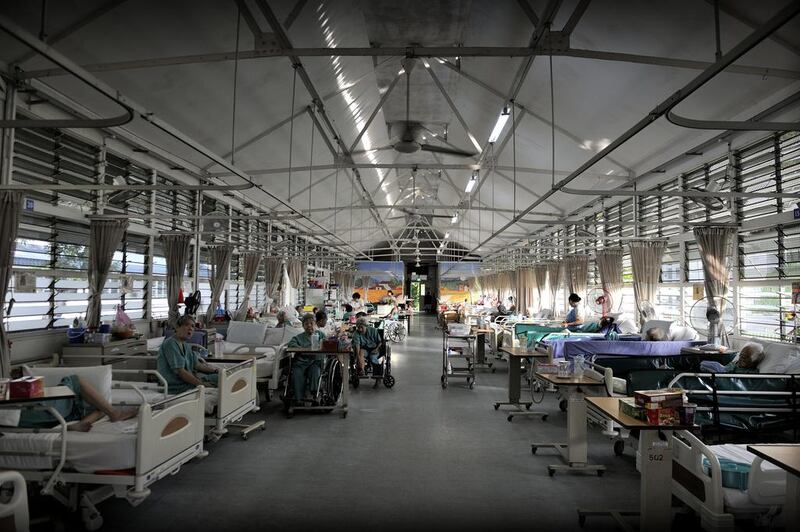SINGAPORE // As a regulator, payer and provider of healthcare services, the Singapore government uses free-market principles alongside intervention to keep medical costs from going off the rails.
"Price control in the sphere of health care is very much set by the government in Singapore," said Dr Jeremy Lim, head of health and life sciences practice at global consulting group Oliver Wyman. "The secret of the Singapore model is that the government has multiple levers."
One of these levers is Medisave - a mandatory national health savings scheme that requires employees to contribute between 8 and 10.5 per cent of their monthly income to a personal account. The money in that account can only be used for government-approved medical bills run up by the account holder and his or her immediate family members. When the account reaches the basic healthcare sum of 52,000 Singapore dollars (Dh134,000) - the amount deemed sufficient for basic subsidised health care in old age - the excess will be channelled into the individual's social security savings fund.
"Essentially co-paying some of the health care through out-of-pocket savings forces patients to exercise their judgement as consumers," said Dr Lim.
To help patients make informed choices, the health ministry has since 2004 published the cost of different procedures at every hospital to promote competition and transparency among healthcare providers.
As Singapore's healthcare regulator, the government keeps supply in check by controlling the number of private hospital licences, the amount of land released for private hospitals, and by determining the intake of medical and nursing students in local tertiary institutions. It also decides how many foreign doctors will be licensed to practise medicine in the country.
In addition, "something people don't appreciate is that in Singapore, the biggest funder of health care is the government", said Dr Lim.
As a major payer, the government sets the pricing for health care through determining subsidy levels, or setting the limits of claims in Medisave or Medishield Life - a government-administered health insurance.
"For example, the Medisave limit for a hospital bed night is 450 Singapore dollars . Anything beyond that, the patient needs to pay cash. So that sets a natural limit to how much hospitals would price board and lodging," said Dr Lim.
Finally, the government runs 80 per cent of the hospitals and provides 20 per cent of primary health care in the country. As the main healthcare provider, what it charges patients sets the tone for the competition so that private operators cannot charge much higher.
Unfortunately, the multiple levers bring with them complexities that are inevitably introduced into the health system and "the complexity leads to difficulty in communication" with patients, noted Dr Lim.
"When there's limited understanding, there is the risk of anxiety and fear and fearmongering and that's the part where the government then needs to work twice as hard to assure Singaporeans."
jtan@thenational.ae
Singapore Health Care
¦ The world's best health care? How Singapore's hybrid model is the envy of other countries
¦ Singapore's 'sandwiched middle class' enjoy health perks
¦ The unique healthcare model os Singapore - in pictures





